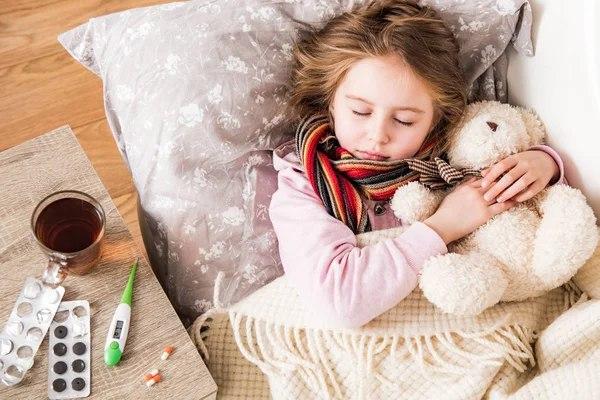Publication date: 14.11.2024

If your child is sick with ARVI, he or she needs special care first of all. First of all, provide him/her with sufficient drinking (warm drink relieves cough), fresh cool air (18-20˚C), moisturizing the nasal passages (irrigation for children over 2 years old and instillation of 1 drop of special saline solutions). During the first three days of the disease, fever is a common manifestation, and it should not be reduced by medications if it is below 38°C for children under 1 year of age and 39°C for older children, unless otherwise recommended by the attending physician. The main symptoms are cough, runny nose, and fever.
You should be aware of the danger signs of high fever, which can also be poorly whipped:
– convulsions in the child
– a rash like irregularly shaped bruises, often found on the buttocks, lateral thighs, and, occasionally, on the face, neck, upper chest
– incessant vomiting, accompanied by severe headache and/or photophobia Such symptoms indicate a serious illness and the child needs immediate hospitalization in the intensive care unit. Also, a child needs hospitalization, although not as immediate, if he or she has shortness of breath accompanied by difficulty breathing (usually starting with a barking cough), which is dangerous for children under 2 years of age, or prolonged difficulty breathing out. Fever (chills) should not be confused with convulsions. In case of high body temperature in a child over 1 year old, it should be remembered that at 38-38.5˚C, the child’s own antiviral defense factors work best, so in the absence of the above-mentioned dangerous signs, good tolerance, you should not try to normalize it. Although, it should be remembered that good sleep also contributes to the body’s work to fight the virus. Therefore, when the child is sleepy and the temperature “interferes” (this is manifested by restless sleep, frequent shudders that wake the child, etc.), it is worthwhile to slightly reduce the fever to a comfortable temperature by using lower dosages of medicines. Fever occurs in two phases. At first, when the temperature rises, the child may have fever (chills), cold limbs, pale skin, and coldness. This is the so-called “white hyperthermia”. At such a time, you need to warm the child (with heating pads, take the infant in your arms, hold it close to you to warm it with your own body, give it a warm drink). Remember, at these moments there may be convulsions (the child is not in contact, unconscious, may turn blue, muscle contractions are quite “large”, the child is “bent”, etc. When the temperature peaks, the child turns red (“burns”), becomes hot to the touch, including the limbs. At this time, the child can be opened and wiped with warm (! ≈25-30˚C) water, and given a cool drink. Usually, the child feels much more comfortable than in the first case. If the child does not feel better in three days, be sure to consult a doctor. With ARVI, the child is usually quite active, or becomes more active with a slight decrease in temperature, and then you can expect improvement in three days, and earlier. If mom is worried about something, such as excessive lethargy, other symptoms that do not fit into the ARVI, consult a doctor.
Source: Integrated management of childhood diseases. Protocol of the Ministry of Health of Ukraine, N 1945 of 09/14/2021
https://www.dec.gov.ua/mtd/integrovane-vedennya-hvorob-dytyachogo-viku/